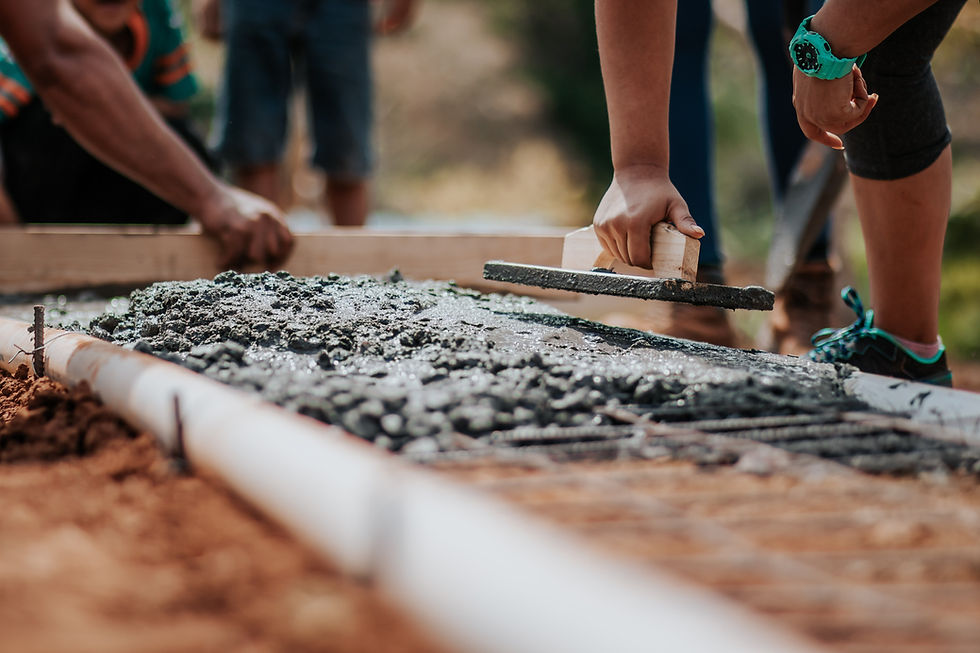FROM THE ARCHIVES: Removing Concrete From The Garden… Or Not???
- k-england
- Mar 1, 2023
- 2 min read
By Pamela Homfelt, for Let’s Talk Plants! March 2023. Originally published March 2009, No. 174.

Removing Concrete from the Garden… or Not?
Back in the day when everyone wanted to improve their property values and cost was not much of an issue, a lot of concrete, needless “seat” walls, pilasters and other costly masonry, usually veneered with faux stone, adorned homes from Vista to Eastlake. Aaaaaah, the good old days.
Concrete was the outdoor floor of choice in spite of the high cost of material and labor, but today we have many greener choices, the major one being interlocking pavers. Why the “green” status? Pavers are not a solid mass of material: the small spaces between each stone allow water to seep back into the ground to recharge natural ground water reservoirs. Laid on a sand and gravel base, the pavers lock into each other without mortar. They are permeable and easily removed or reconfigured in the future. Another benefit: with a little research, willingness and muscle, laying pavers can be accomplished by the do it yourselfer. Pavers come in many colors and shapes, even a random flagstone shape, so any theme or architectural style can be created.
But what if a sea of unforgiving concrete renders the landscape harsh, hot and ecologically outmoded? You don’t want to remove it and haul it to the landfill, since you paid a tidy sum to have that hardscape poured in the first place, so why not use it in a different way?
Depending on the original configuration, concrete can be reduced or reshaped by saw cutting at the expansion or score joints. The broken pieces, which perfectly match the now smaller, remaining patio, can be used to create steppingstones, dry stacked walls, steps, or secondary patios. You can put dry mortar between the stones, but gravel, decomposed granite, or a “steppable” plant groundcover is a much more charming option, especially if not subject to constant, heavy traffic.
Concrete is usually 4" thick, so the work is not easy, but the transformation will be well worth it. Keep the pieces as large as possible and lay them out before burying them level with grade. As always, but particularly with hardscape, this project should be drawn to scale, preferably by a designer. The actual work is best performed by a licensed mason, especially the saw cutting.
Slices of concrete can also be removed and replaced with ribbons of pavers, brick or flagstone (remember - permeable and movable) in a carefully designed pattern. This can be an especially effective way to enhance the very obvious and intrusive driveways that dominate the front of most homes.


Note of caution: if the concrete was reinforced with rebar it cannot be reused.
If this sounds too expensive or exhausting, how about a vine-covered pergola or fabric sails to create shade, maybe some layered outdoor carpets to soften? Although the permeability issue will remain, shading the home and creating a cool and sometimes more private space will justify the large concrete expanse to some degree. Do your research, however, on the new regulations prohibiting certain configurations and locations of wood structures in your community.

